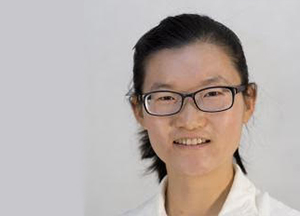 The mutual interplay between electron transport and magnetism has
attracted considerable attention in recent years, primarily motivated by strategies to manipulate magnetic degrees of freedom electrically, such as spin-orbit torques and domain wall motion. Within this field the topological Hall effect, which originates from scalar spin chirality, is an example of inter-band quantum coherence induced by real-space inhomogeneous magnetic textures, and its magnitude depends on the winding number and chiral spin features that establish the total topological charge of the system. Remarkably, in the two decades since its discovery, there has been no research on the quantum correction to the topological Hall effect. Here we will show that, unlike the ordinary Hall effect, the inhomogeneous magnetisation arising from the spin texture will give additional scattering terms in the kinetic equation, which result in a quantum correction to the topological Hall resistivity. We focus on 2D systems, where weak localisation is strongest, and determine the complicated gradient corrections to the Cooperon and kinetic equation. Whereas the weak localisation correction to the topological Hall effect is not large in currently known materials, we show that it is experimentally observable in dilute magnetic semiconductors. Our
theoretical results will stimulate experiments on the topological Hall effect and fill the theoretical knowledge gap on weak localisation corrections to transverse transport.
The mutual interplay between electron transport and magnetism has
attracted considerable attention in recent years, primarily motivated by strategies to manipulate magnetic degrees of freedom electrically, such as spin-orbit torques and domain wall motion. Within this field the topological Hall effect, which originates from scalar spin chirality, is an example of inter-band quantum coherence induced by real-space inhomogeneous magnetic textures, and its magnitude depends on the winding number and chiral spin features that establish the total topological charge of the system. Remarkably, in the two decades since its discovery, there has been no research on the quantum correction to the topological Hall effect. Here we will show that, unlike the ordinary Hall effect, the inhomogeneous magnetisation arising from the spin texture will give additional scattering terms in the kinetic equation, which result in a quantum correction to the topological Hall resistivity. We focus on 2D systems, where weak localisation is strongest, and determine the complicated gradient corrections to the Cooperon and kinetic equation. Whereas the weak localisation correction to the topological Hall effect is not large in currently known materials, we show that it is experimentally observable in dilute magnetic semiconductors. Our
theoretical results will stimulate experiments on the topological Hall effect and fill the theoretical knowledge gap on weak localisation corrections to transverse transport.
About the presenter
Hong Lui is a Research Fellow with CI Dimi Culcer at UNSW. She is exploring spin-orbit coupling and interaction effects in topological materials theoretically, as part of FLEET’s Research Theme 1, Topological Materials.
